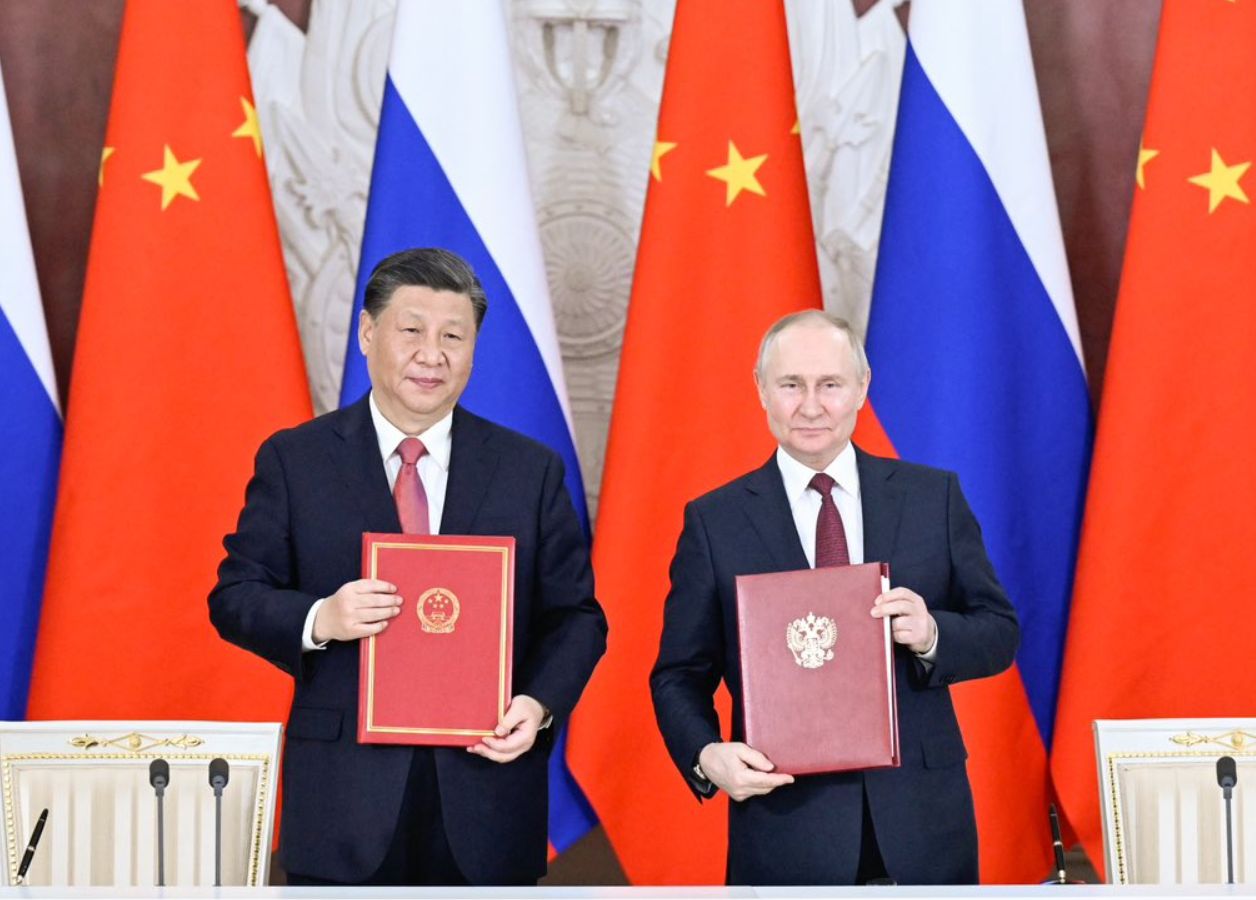To the victor belongs the spoils of the war. In the Ukraine-Russia war, a third party emerged victor – China. Since West-supported Ukraine and Russia have locked horns, China has gained access to unforeseen geographical locations like the Vladivostok port, and its auto-economy has scaled up exponentially.
Biden Dangles F-16s Over Putin’s Head; Russia Likely To Unleash Its Stealth Su-57 Fighters To Hunt Them Down
The Russia-Ukraine war has entered a stalemate, and both Russia and NATO countries are galvanizing resources to maintain an upper hand in the war zone despite Moscow claiming success in Bakhmut.
In this, China has remained neutral while keeping its national interest paramount. China has taken complete advantage of Moscow’s isolation following its aggression against Ukraine and has emerged as the dominant partner in the ties.
From June 1, the Russian Vladivostok port will be operational as a Chinese Transit Port. Located on the Pacific Ocean, the port sees annual container traffic of nearly one million twenty-foot equivalent units.
The city has been home to the Russian Pacific Fleet. In 1860, the port was ceded to the Russian Empire by the Chinese Qing. With the opening of the port, the northeastern interior of China will gain access to the sea. By reaching this seaport via rail, products from Northern China will be further shipped to Southern China by ship.
The Vladivostok port, formerly known as Haishenwai during the rule of the Qing dynasty, will provide cross-border transit for domestic trade shipments in Northeast China’s Jilin province.
The General Administration of Customs China (GACC) announced this on its website without much fanfare. The move, Beijing says, is in line with its “national strategic plan to re-vitalize Northeast China’s industrial base and facilitate the cross-border transport of domestic trade goods with the use of overseas ports.”
Previously, China has staked a claim on the Vladivostok port through historic rights. Now China is terming the participation of Vladivostok port in China’s trading system as a reflection of “high-level strategic mutual trust between China and Russia.”
With the Western sanction crippling the Russian economy, its dependency on China is bound to increase. Bilateral trade between China and Russia stood at US $73.15 billion over the first four months of 2023, surging 41.3 percent year-on-year, according to the GACC.
Russian Prime Minister Mikhail Mishustin recently signed a government order approving an intergovernmental agreement to supply natural gas to China via the Far East gas pipeline route, which ends in Vladivostok.
“With the opening of Vladivostok port, China and Russia can engage in more cooperation in port construction and logistics, further enhancing the economic vitality of northeastern China and development in the Russian Far East,” Song Kui, head of the Contemporary China-Russia Regional Economy Research Institute was quoted in the Global Times.
The opening of Vladivostok port for China will reduce Jilin and Heilongjiang’s land transport distance to the sea, which will “greatly enhance their manufacturing competitiveness”.
The transportation cost for goods will be greatly reduced as Vladivostok is only 200 km away from these Chinese cities. “Shipping goods from northern to southern China via the foreign port of Vladivostok will not only cut costs but also help China strengthen its industrial and supply chains with its neighbors,” a Global Times report said.

Strategic Importance of Vladivostok
Vladivostok is located in northeast Asia, where China, North Korea, Japan, and Russia meet. It is a critical transport node between the whole of Europe and Asia. Apart from being an important economic transport, it also has geopolitical importance for Russia.
Japan has been claiming the four southern Kuril Islands, which were seized by Soviet forces at the end of World War II. The islands are strategically located, separating the Sea of Okhotsk from the Pacific Ocean. They make a vital point of egress for the Russian Pacific Fleet located at Vladivostok.
Following Russia’s Ukraine invasion, Japan applied sanctions on the country and ended economic cooperation around the islands. In response, Russia halted the peace treaty talks over the Kurils islands and even conducted military exercises around the island focusing on repelling an invasion.
In fact, a joint naval exercise with China – Vostok 2022 was also conducted in the region.
The strengthening of ties between Russia and China is evident from Chinese President Xi Jinping forgoing the country’s long-practiced policy of neutrality when it comes to bilateral conflicts and contending that Beijing doesn’t support Japan’s claim over the four disputed islands.
Chinese Economic Ascension Since Russia-Ukraine War
Riding on the back of the increased deliveries to Russia and rising demand for electric vehicles, China surpassed Japan as the world’s leading auto exporter in the first quarter of 2023.
The Russian auto industry has been pummeled by the economic sanctions forcing out the major global players out of the country, which has proved to be a booster for the Chinese car industry.
According to the data released by the China Association of Automobile Manufacturers, automobile exports in the January-March period saw a whopping jump of 58 percent from the previous year. The country exported 1.07 million units during the quarter as opposed to 950,000 vehicles exported by Japan.
While Belgium, Australia, and Thailand remained the top destination for China-manufactured electric vehicles, Russia emerged as the top export destination for all Chinese-made vehicles. Exports to Russia tripled from the previous year to 140,000 units.
After Russia invaded Ukraine in February 2022, Toyota Motor, Volkswagen, and other global automakers shut down Russian factories and pulled out of the market.
The vacuum was filled by Chinese automakers, particularly Chery Automobile and Great Wall Motor expanded their operations in Russia. Chery Automobile is said to be funded by entities linked to Chinese municipal governments.
China also exported nearly 30,000 trucks to Russia, and they could be used for military purposes. It is almost seven times the volume from last year.
China had overtaken the US in 2009 as the world’s largest market for new vehicles. The growth spurt in Chinese auto exports is expected to continue in the present quarter as the Chinese government has given tax incentives to help the domestic Electric Vehicle industry grow. The government’s support made electric vehicles mainstream.
The shift to electrics has fueled China’s rise as an auto-exporting power. First quarter exports of new energy vehicles, which include EVs, soared 93% on the year to 380,000 units. New energy vehicles accounted for roughly 40% of China’s overall auto exports.
- Ritu Sharma has been a journalist for over a decade, writing on defense, foreign affairs, and nuclear technology.
- She can be reached at ritu.sharma (at) mail.com




